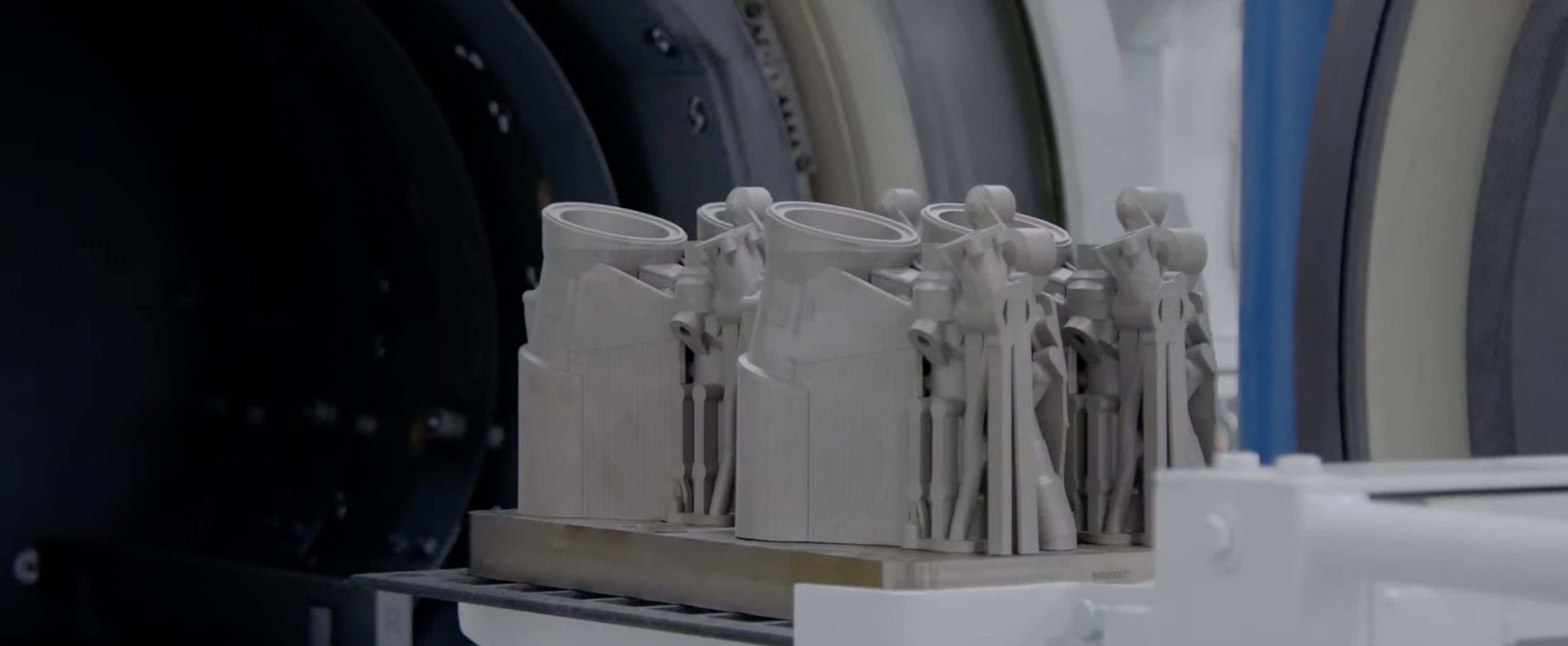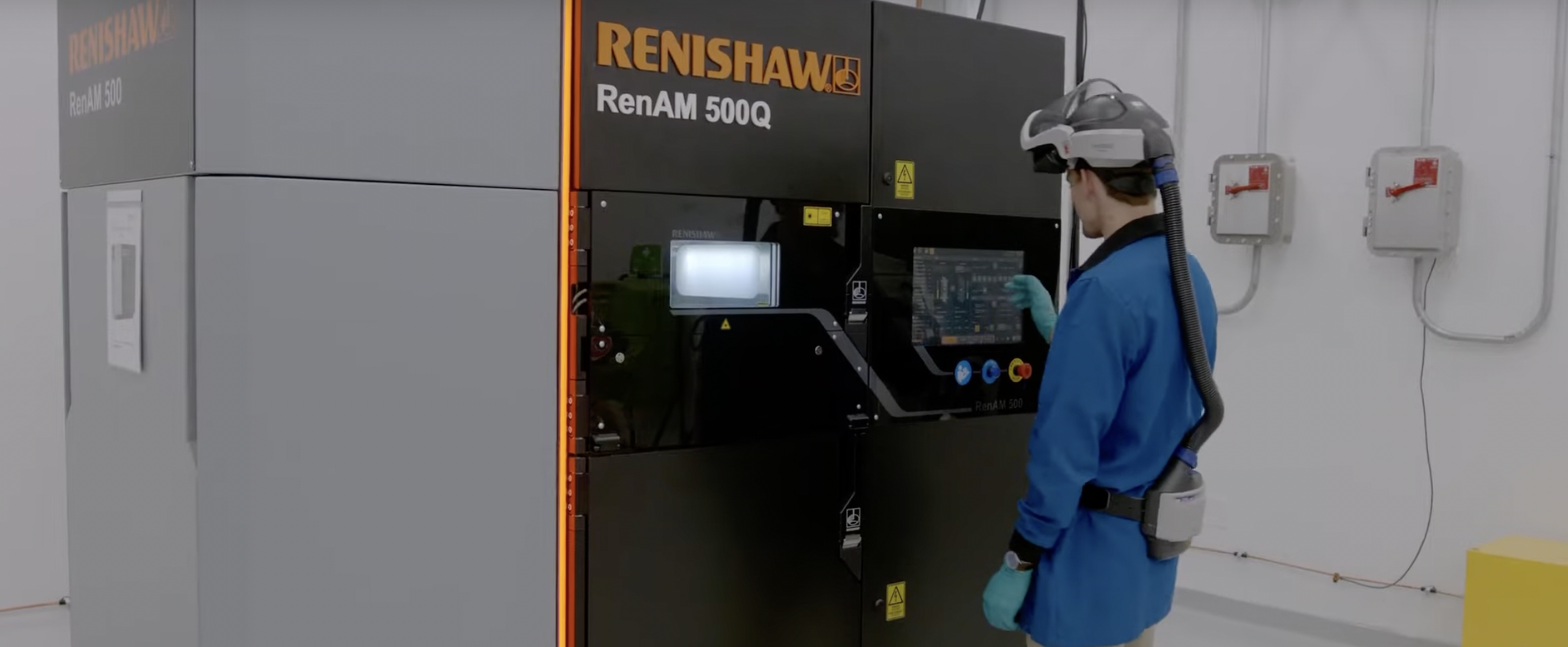Collins Aerospace, a division of Raytheon Technologies, revealed its new additive manufacturing center and the expansion of its maintenance, repair, and overhaul (MRO) capabilities at its Monroe, North Carolina campus. Collins, which specializes in providing solutions for the global aerospace and defense industry, already owns multiple 3D printers, and this new addition will only increase its production capability of lightweight 3D printed aerospace parts.
Initially opened in 2004, Collins’ 160,000-square-foot Monroe MRO facility serves more than 300 customers across the aerospace and defense industry and repairs more than 6,500 unique part numbers for aircraft, including actuation systems, helicopter rescue hoists, and air management systems. The new AM center – which has two 3D printers with plans to add more – joins the company’s existing global network of additive production centers in Iowa, Minnesota, Singapore, and additive research centers in Connecticut and Poland.

Collins Aerospace relies on additive manufacturing for part manufacturing. Image courtesy of Collins Aerospace.
Collins already uses several AM systems, including multiple SLM 280 and SLM 500 3D printers, Renishaw systems, and several 3D Platform and Prusa printers for prototyping. For example, two months ago, Collins became one of the first ten customers in the world to purchase an SLM Solutions 12-laser NXG XII 600 3D printing system with plans to install it at its engine nozzle production facility in West Des Moines, Iowa, during the second half of 2022.
At its Kilkeel, Northern Ireland facility, Collins has been making a significant contribution to the region’s thriving aerospace sector while leveraging 3D printing innovations. In the last few years, Kilkeel’s operations modernization team has been converting plastic waste into feedstock to 3D print non-critical manufacturing jigs and fixtures across the whole production site, achieving 72% carbon dioxide equivalent savings.

Engineers at Collins Aerospace rely on Renishaw machines for manufacturing aerospace parts. Image courtesy of Collins Aerospace.
Commenting on the latest addition, Collins VP of Operations Kevin Myers said that additive manufacturing offers several key benefits compared to traditional manufacturing. “By using additive manufacturing to produce aircraft parts and components, we can help reduce weight, cost, and time to market, and provide more sustainable solutions for our customers.”
In 2021, the company completed a $30 million expansion of the facility and has since invested an additional $15 million as part of the Monroe City Council and Union County Board of Commissioners’ new economic development project. The MAGNET100 program is intended to encourage continued capital investment by companies over ten years, with investment thresholds of $30 million in the first three years and $50 million in the first seven years.
According to the Monroe site director Mary DeStaffan, the facility is one of Collins’ largest MRO sites worldwide. Not only has the company added new advanced manufacturing equipment to streamline operations, improve quality control and enhance employee safety, but it has also increased the size of Monroe’s workforce, bringing on more than 70 new employees in the past year and continuing to hire for additional openings.
With over 70,000 employees in 300 sites, $23 million in net sales, and more than $3 billion invested annually in R&D, Collins is now one of the largest aerospace industry suppliers in the world. The company was even selected to outfit the next generation of space explorers. Along with teammates ILC Dover and Oceaneering, it will deliver NASA’s upcoming spacesuits, which astronauts could wear when working outside the International Space Station (ISS) and – within the next decade – on the Moon. In addition, aiming to cater to the space industry, Collins recently revealed that it has supplied various subsystems for life support and thermal control onboard the CST-100 Starliner spacecraft that recently underwent a successful Orbital Flight Test 2 (OFT-2) mission.
Collins also has some major partnerships to advance aircraft hardware and technologies, such as a recently revealed collaboration with Boeing to test a new environmentally friendly air chiller for airline premium suits and passenger social zones. Furthermore, Collins also leads the APNT (assured positioning, navigation, and timing) solutions category for ground platforms, having delivered more than 10,000 navigation systems to military armed forces around the world.
Moving forward, it is clear that the company will incorporate more additive technologies into its facilities worldwide, especially as it continues to increase its already comprehensive portfolio of platforms to solve some of its customers’ toughest challenges and to meet the demands of a rapidly evolving global aerospace and space market.
Subscribe to Our Email Newsletter
Stay up-to-date on all the latest news from the 3D printing industry and receive information and offers from third party vendors.
You May Also Like
Printing Money Episode 17: Recent 3D Printing Deals, with Alex Kingsbury
Printing Money is back with Episode 17! Our host, NewCap Partners‘ Danny Piper, is joined by Alex Kingsbury for this episode, so you can prepare yourself for smart coverage laced...
Insights from Cantor Fitzgerald on AM’s Q1 2024 Landscape
A recent survey by Cantor Fitzgerald sheds light on the persistent challenges within the additive manufacturing (AM) industry in the first quarter of 2024. Based on responses from 38 industry...
3D Printing Financials: Xometry’s Scaling up and Strong Start to 2024
Xometry (Nasdaq: XMTR) kicked off 2024 with strong results, boosting its marketplace and technology to new heights. Both revenue and gross margin soared, fueled by an expanding global network of...
3D Printing Financials: Desktop Metal Targets Recovery Amid Net Losses and Revenue Downturn
Despite facing a decline in revenue and the persistent challenges of a tight economic climate, Desktop Metal (NYSE: DM) is making strides toward operational efficiency. The first quarter of 2024...
































